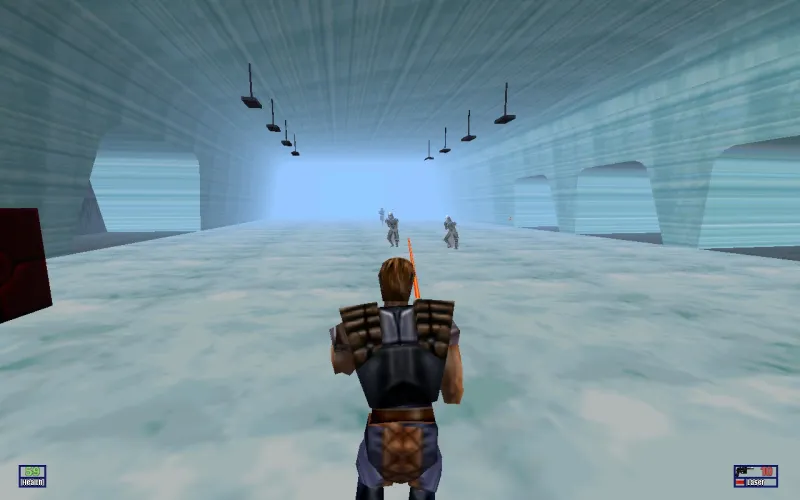


In 1996, right before the special editions of the original Star Wars trilogy released in theaters, and three years before The Phantom Menace, one Star Wars story tried to make an impact without the aid of an accompanying film. Star Wars: Shadows of the Empire was LucasArts’ attempt to tell the story between The Empire Strikes Back and Return of the Jedi across multiple types of media, and one of its pillars was a video game. Shadows of the Empire marked a direct collaboration between Star Wars and Nintendo, helped launch the N64, and suffered as a result of its undeniable hubris. Despite all this, the game is one of the earliest examples of a 3D, third-person action game, and it holds a special place in the hearts of young-at-the-time Star Wars fans.
This article originally appeared abridged in the September 2018 issue of Game Informer.
Jon Knoles works on the Forza series with Microsoft today, but early in his video game career he worked on what many would consider to be the dream license. Between doing art for the NES Star Wars in 1991 and doing some work on the 2005 Revenge of the Sith game, Knoles worked on 24 Star Wars video games. His first project lead role was on Star Wars: Shadows of the Empire for the N64. “There were four of us that agreed to be co-project leaders,” Knoles says. “Mark Haigh-Hutchinson was one, Eric Johnston was one, I was one, and Mark Blattel, I guess you could say was our fourth. We were the four banditos.”

The earliest version of the game wasn’t a Star Wars game. After working on the Super Star Wars action/platformers and the TIE Fighter and X-Wing flight games, Knoles wanted to do something different. “We decided to take a break from Star Wars, so we started kicking around this idea of a western with this new machine we heard Nintendo was making,” Knoles says. His team was experimenting with the new world of 3D graphics, specifically trying to place a player on a moving train.
Nintendo reached out to LucasArts about making a Star Wars game for its new hardware. It wanted something new with original characters that could be directly associated with its brand-new console. From there, the Shadows of the Empire multimedia experience began to come together. “I guess I was the one that came up with the time frame and the setting and the overall plot, which was to see what really happened on the way to delivering Han Solo to Jabba the Hutt,” Knoles says. His original pitch was to follow Boba Fett as he was chased through the galaxy by the bounty hunters from The Empire Strikes Back. “That would have been an awesome game, but my directive was that it needed to be based on an original character,” Knoles says.
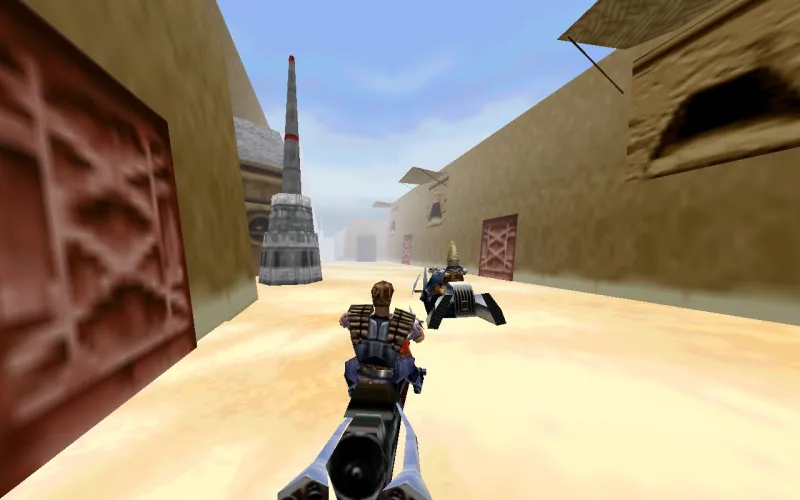
Dark Horse ultimately delivered Knoles’ original story idea following Boba Fett in a series of comics, while the Shadows of the Empire novel took the lead covering the interpersonal relationships between Princess Leia, Luke Skywalker, and new antagonist Xizor. Knoles and his team was tasked with following Dash Rendar, a character who was supposed to be a scary space pirate serving as a stand-in for a frozen Han Solo. Knoles admits that he didn’t like the character’s name: “Somewhere in a box in the garage, there is probably a list of name ideas for Dash, but ultimately the novel gave him that name, so I said, ‘Alright, let’s just go with it.’” Nintendo even went as far as making Dash and his droid LE-BO2D9, a.k.a. Leebo, characters that would be exclusive to the N64 for a period of time.
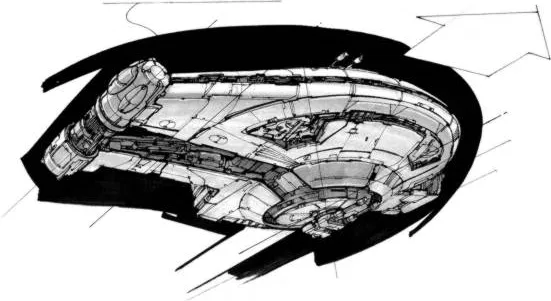
The author of the Shadows of the Empire novel, Steve Perry, initially wanted Dash to stand apart from Han with long red hair and fly a shiny black spaceship. “I felt the ship should resemble the heavily used ships like those in the films and should be a more modern design by the same builders of the Millennium Falcon,” Knoles says, which is what Dash’s ship, The Outrider, eventually became. Technical limitations prevented Dash from being able to have long hair and exposed shoulders. His giant shoulder pads were actually a solution to help the animators. “Dash was sort of an amalgamation of many different peoples' visions,” Knoles says, “But The Outrider came out exactly as it was meant to.”
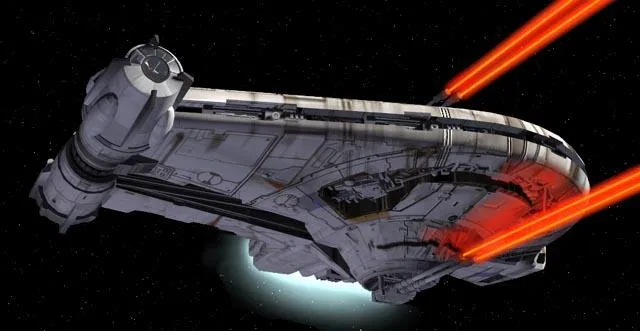
Shadows of the Empire’s position in the Star Wars timeline was set, so when it came to making the actual game, Knoles and his team looked to what had been successful in the past. The Super Star Wars games explored multiple play styles and genres and were well-liked. “We were like, ‘Hey, let’s just move this to the world of 3D!’” Knoles says. “‘This will be easy!’ Wrong.” Shadows of the Empire experimented with low-altitude flight, third-person shooting, high-speed racing, on-rails shooting, and even full space flight. “Yeah, that was my fault,” Knoles says. “I would never do that again. That was too many games in one.”
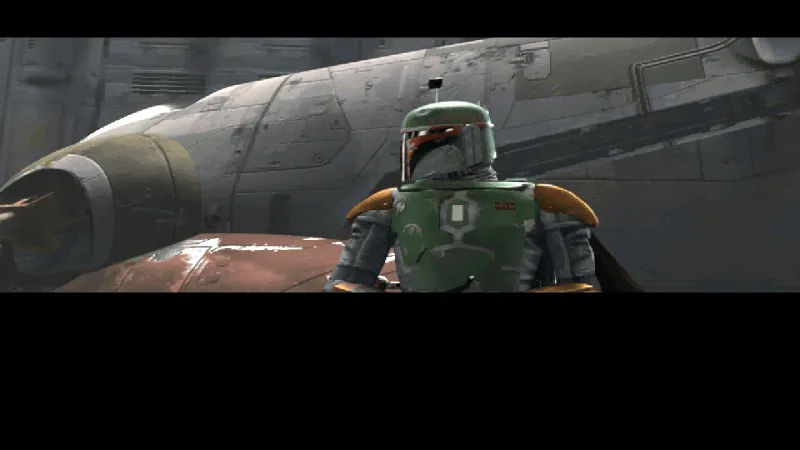
On any platform during any generation, a game as diverse as Shadows of the Empire would be difficult, but to make it even harder, Knoles and his team were also trying to figure out how to work in 3D. “What do you do with the guy’s feet when you’re rotating the camera to the left or to the right?” Knoles asks. “These are all things that have been figured out hundreds of times by many people since, but at the time, we were among the first two or three projects in the world trying to tackle this problem.” The team didn’t make the N64’s launch day. The game released a few weeks after, but was on shelves for the Christmas rush.
Then there was the matter of making the game on a secretive new console. Even within the LucasArts office, the Nintendo 64 was a carefully guarded secret. “We even had to have the controller hidden in a box with both ends cut out of the side, so you couldn’t see it. You would just put your hands in the side of the box,” Knoles says. “The analog stick was top secret.”
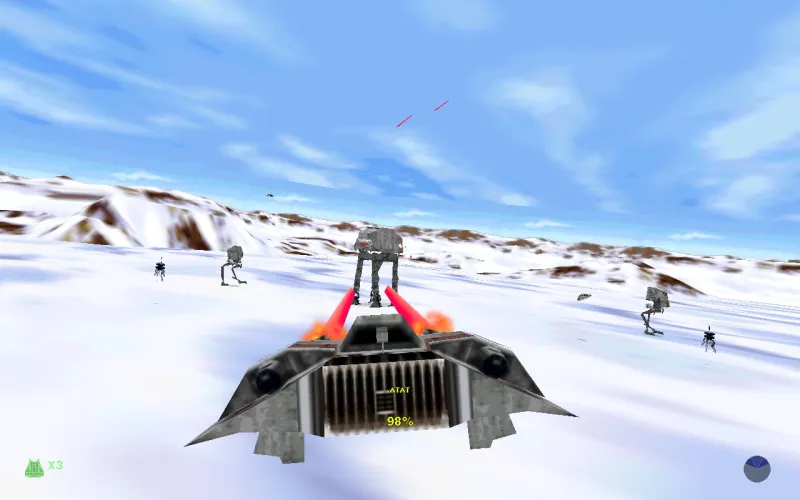
The opening Hoth level and the four-legged AT-ATs proved particularly difficult. “We almost didn’t ship with that gameplay because the programmers were telling me, ‘Man, it’s going to be too hard. We can’t do this sort of cable wrapping around the legs thing’,” Knoles says. Despite their reticence, Knoles bugged them incessantly to try and make it happen, until one day, lead programmer Eric Johnston figured it out. “That’s the kind of amazing stuff where he always had the ability to pull miracles out of thin air like that,” Knoles says. It was an impactful moment. “There are a few points in my almost 30 years of making games where I had a transformative experience,” Knoles says. He describes one as seeing TIE-Fighters firing green lasers at the screen realistically in the earliest builds of X-Wing, and another as being able to trip up an AT-AT with a harpoon cable for the first time in Shadows of the Empire. “However, we didn’t do a very good tutorial, so you really had to accomplish that as a player,” Knoles says, “But when you did, it was a huge sense of accomplishment. That was fantasy fulfillment.”
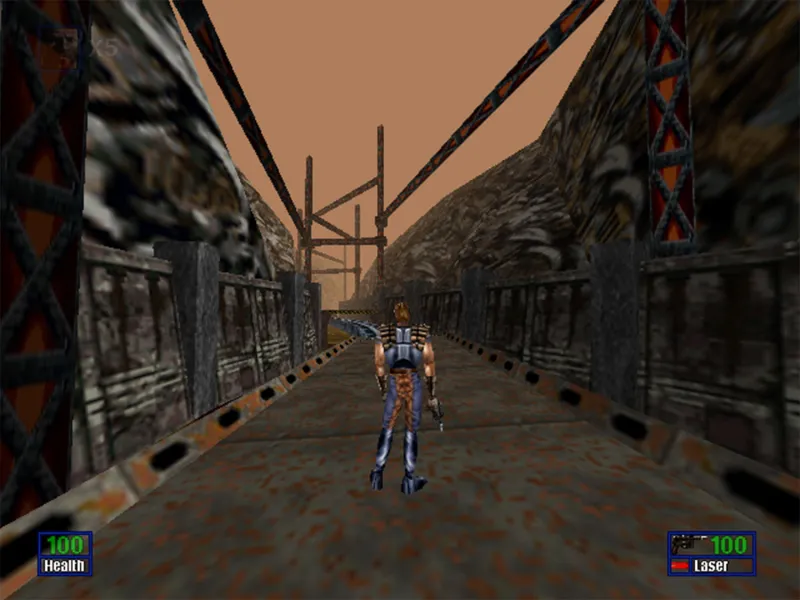
The remnants of the earliest version of Shadows of the Empire – the western taking place on a train – are best represented in Ord Mantell Junkyard. The level takes place almost entirely on a moving train and gives the robot bounty hunter IG-88 one of the biggest spotlights the character ever received by making him the end boss. The recent Star Wars film Solo made me recall this particular level with its big train action sequence and Knoles had a similar flashback. "It's significantly more exciting than the one where you are leaping over strange things that will kill you," Knoles says with a laugh.
Knoles tried to get a dedicated Han Solo video game off the ground during his time at LucasArts and spoke with Brian Daley, who wrote The Han Solo Adventures novels, about the potential game and the Solo movie made him recall those conversations. "I think if he were still alive, he would have loved [Solo]," Knoles says, "He is someone I spoke to at length, trying to pick his brain about ideas for a Han Solo game we wanted to make. In fact, a lot of those ideas I talked to him about lead to the Shadows of the Empire story." Regarding his own thoughts on Solo, Knoles liked the film. "I loved it. It was exactly what I was expecting and what I was hoping. It was like one of those games we always wanted to make, but never got to make."
Among the on-foot levels, Gall Spaceport stands out. You begin the level inside of The Outrider, and then step out into the larger world seamlessly – an impressive feat in 1996. “That was a requirement of mine. I always wanted to do that in a game, but hadn't been able to,” Knoles says. The level was designed by Jim Current and was impressive in its ability to show the player their destination long before they would actually be able to get there. The level’s large vistas were even more explorable after acquiring a jetpack about halfway through the level. There were few, if any invisible barriers to exploration, and it all culminated in a boss fight against Boba Fett and his iconic ship, The Slave 1. "The boss fight at the end was meant from the start to be Boba Fett's first great video game appearance," Knoles says. "Mark Haigh-Hutchinson did a great job of making him a total badass."
Jon Knoles worked with George Lucas on many projects, casually referring to him as simply “George” during our conversation, but Lucas didn’t have much feedback for Shadows of the Empire. However, Knoles got feedback from Mario creator Shigeru Miyamoto, and it wasn’t all encouraging. Knoles and a few others from the team met with him during E3 before the launch of the N64. “He was talking to us about the new Mario and how excited he was to see the stuff we were working on… and then he proceeded to provide us with some critiques,” Knoles says.
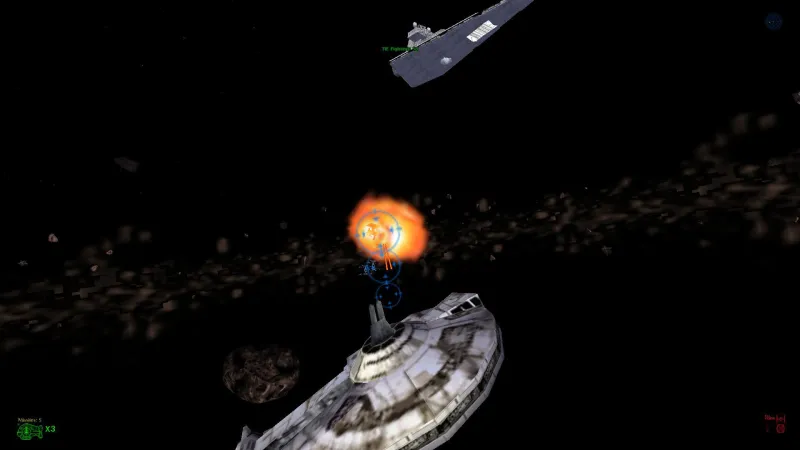
Knoles was in his late 20s, excited to be the lead on a project for the first time on a new 3D platform. “I am feeling pretty good about what we got, and the feedback was certainly legitimate,” Knoles says. Miyamoto said the camera needed some work. Using Mario 64 as a reference, he said the camera should feel like a hot-air balloon tied to the character, and that’s how smoothly it should move through the environment. Miyamoto was also insistent that Dash’s feet always be visible. “Part of our problem, being a shooter, was the farther away you get from your character with the camera, the more inaccurate your shooting, turning, and aiming feedback becomes,” Knoles says, which caused some debate. “The other bit of feedback… I’d like to think something was lost in the translation, but I swear what I heard his translator say was, when we were talking about character animation, ‘Do you not to take pride in your animation?’” Knoles says, laughing. Knoles himself had done all of Dash’s animation, so he took it personally. “They were right, but it was harsh feedback at the time,” Knoles says. “That stung a little bit, but it was still pretty cool to meet Miyamoto.”

When it released, Shadows of the Empire was not a critical success (though Game Informer gave it a 9.25). Knoles describes Shadows of the Empire’s reception as heartbreaking, but he still has plenty of reasons to be proud. “I think a lot of that was trying to do too much in a short amount of time, but what we did, was still impressive,” Knoles says. The game has a following appreciative of its attempts to close one of Star Wars’ biggest story gaps, and perhaps more importantly, the game sold very well. The N64 version of the game sold about three million units and the PC version exceeded expectations. “[The PC version] was expected to sell something like 50,000 to 60,000 units. The game easily sold 10 times that in the first year, which surprised everyone,” Knoles says. “It made Lucas and Nintendo happy. The novel and the comic book and soundtrack came out at the same time so LucasFilm licensing was happy because they got to have their big multimedia event.” For many young players, it served as an introduction to both Star Wars and a new Nintendo console.
In the last two years, thanks to releases on GOG and Steam, Shadows of the Empire has experienced a resurgence. “I got word from people recently saying, ‘Oh I love that game!’ and I say, ‘Oh, I’m sorry,’” Knoles jokes. By today’s standards, the game has rough edges, both literally with its limited angular art design, and figuratively in its mechanics. “I look at it now, and a lot of it really didn’t age well,” Knoles says. “When you get enough time to polish something, and you only do one or two things instead of five things, you can make a much better game out of it. I still have a lot of pride for it. I would just do it all differently now if I could.”
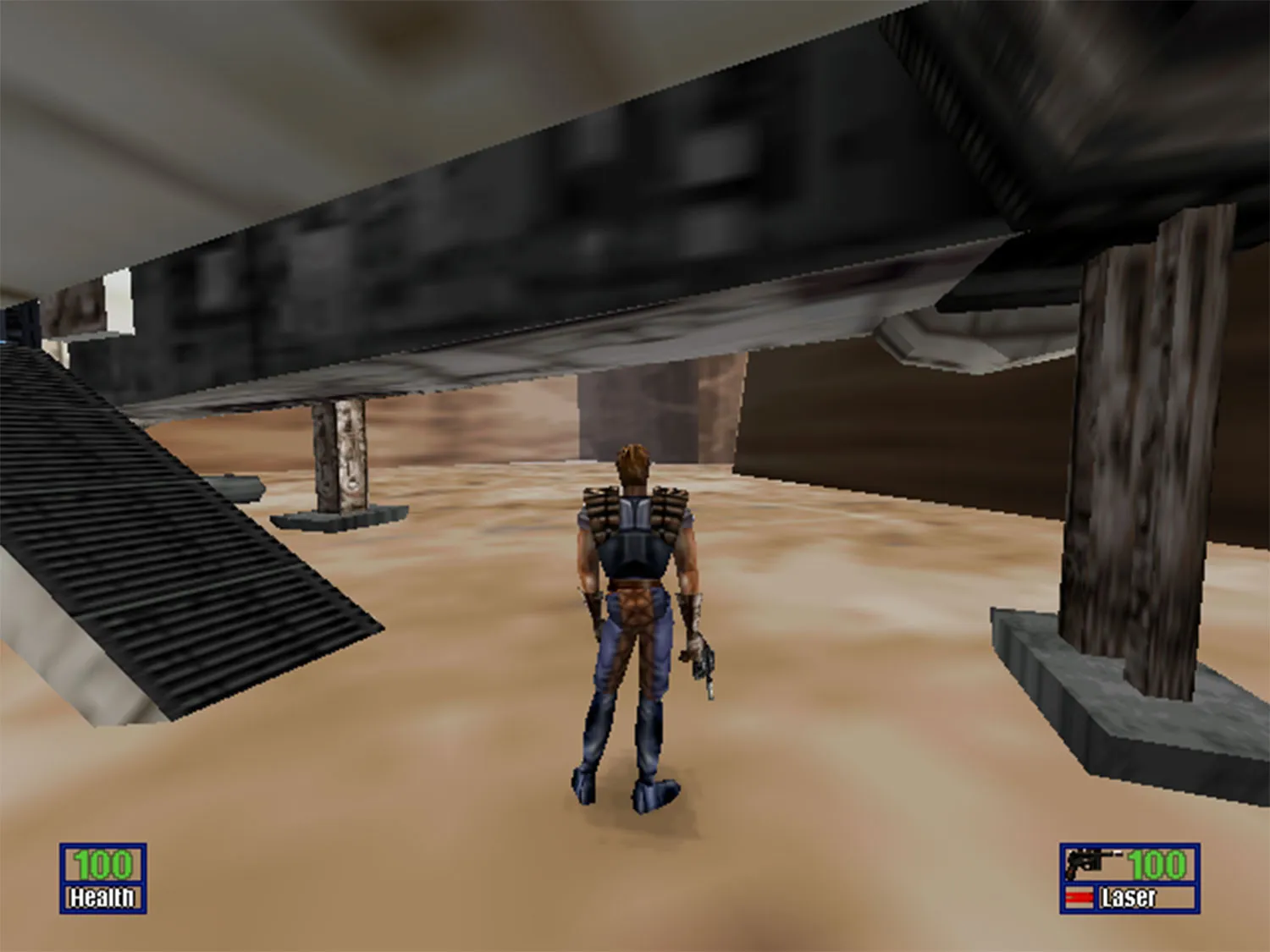
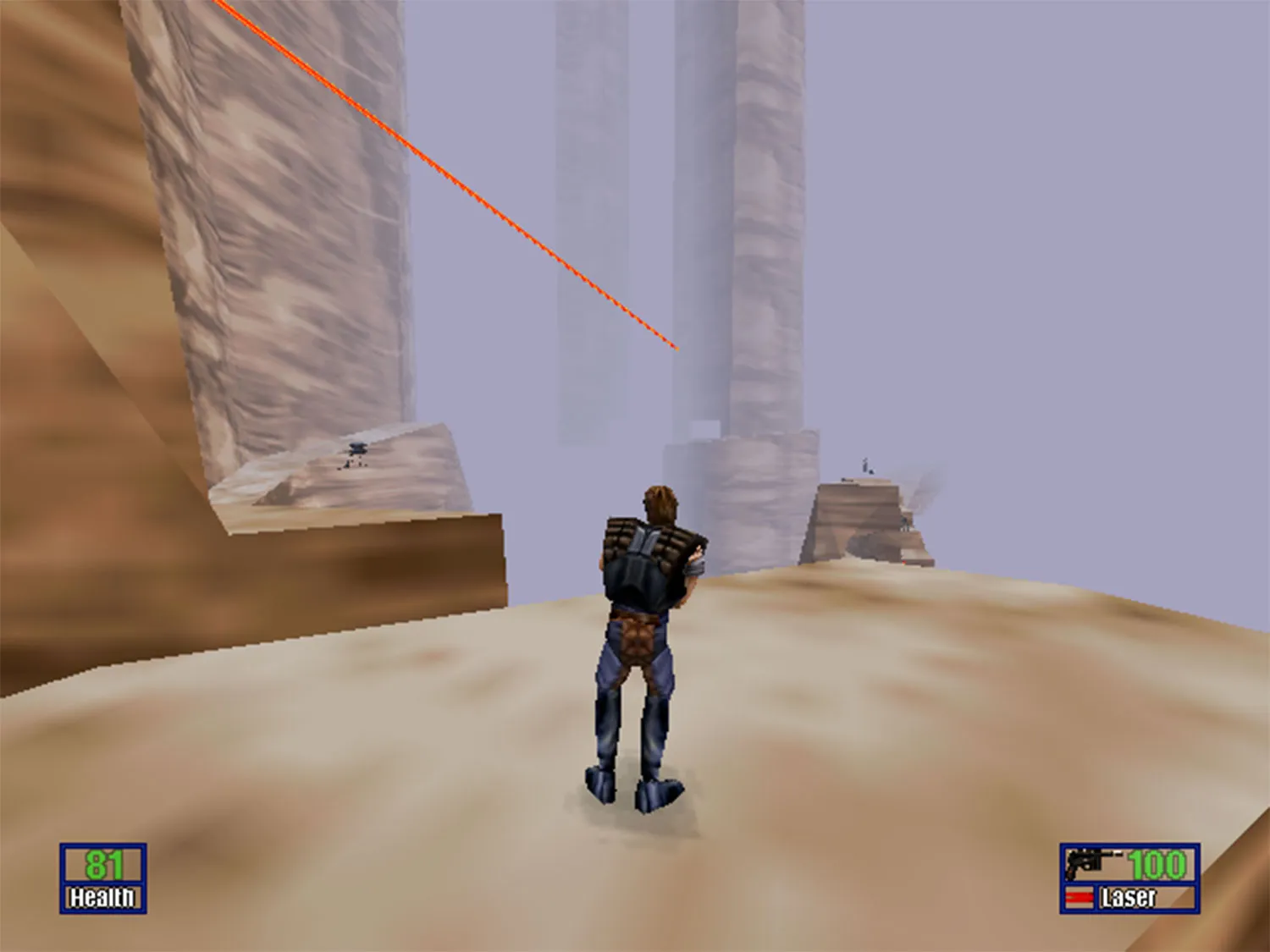

Explore your favorite games in premium print format, delivered to your door.